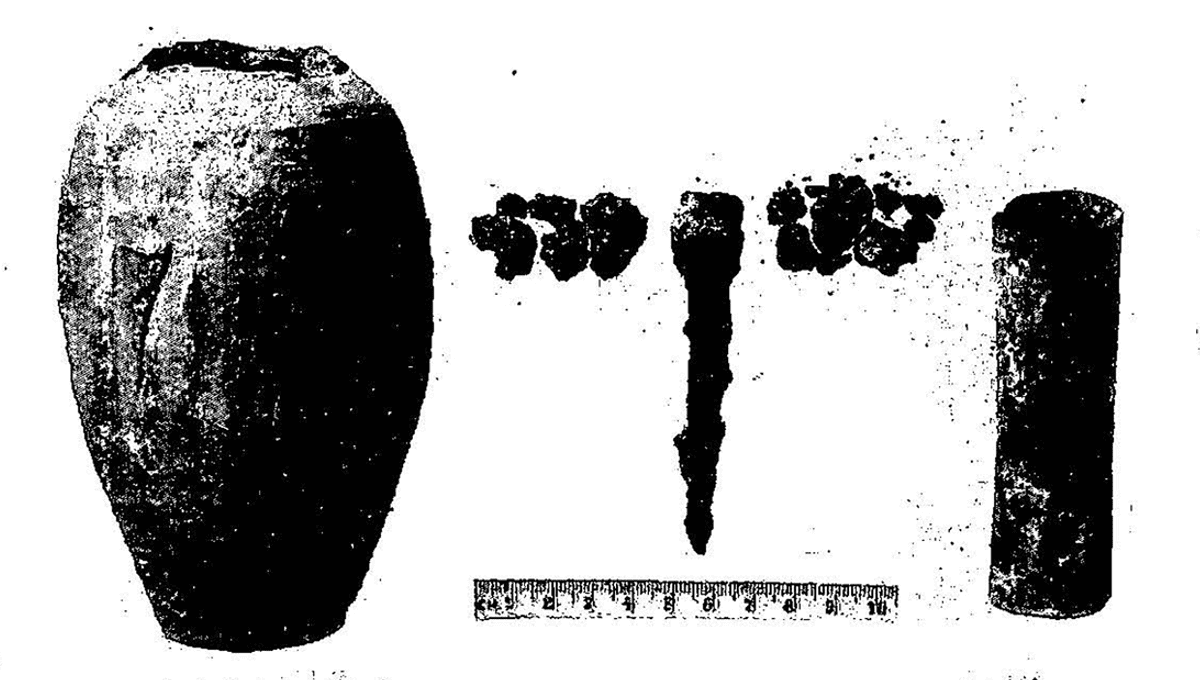
In 1938, German archaeologist Wilhelm König found a clay jar in Khujut Rabu just outside Baghdad. The jar was covered with a stopper made of asphalt, and is believed to be around 2,000 years old. But the bit that interested a number of archaeologists and scientists was the contents: an iron rod inside a copper cylinder. This got some people wondering: could it possibly be an ancient battery?
König was the first to suggest that the jar was used as an ancient battery, 18 centuries before the first true battery was invented.
While the idea was certainly a leap in the imagination, the jar would work as a battery. After World War II, engineer Willard Gray took a replica of the Baghdad Battery, filled it with grape juice, and was able to produce 1.5-2 volts of electricity. Nothing to write home about, but definitely a charge. Subsequent experiments have confirmed the setup could produce power if the owner had the knowledge and grape juice necessary.
Even Mythbusters tested the theory in a controversial episode of the show. The team took 10 replica jars and filled them with lemon as the electrolyte. The jars produced just 0.5 volts on their own, but when hooked together they managed to produce 4.5 volts, which they deemed made the myth plausible. The controversial part of the episode took place at the end when Adam Savage volunteered to be shocked by the battery. Instead, as a prank, the Baghdad battery was switched out for a much higher voltage battery, resulting in genuine bad feelings between Adam Savage and the man who came up with the prank.
While the evidence that the jars could produce charge is intriguing, it doesn’t mean that this is how they were used 2,000 years ago, or maybe fewer as there are questions about the dating of the jar, with some putting it at around 225 CE.
It could be that the Parthians (or the Sassanians, if later dating is correct) knew about the effect of the jars (e.g. a pleasant zap or tingling) without knowing the underlying reasons why it works.
Dr Paul Craddock, a metallurgy expert from the British Museum, suggested a much more outlandish theory that people could use it for a trick in a temple.
“The statue of a god could be wired up and then the priest would ask you questions,” Craddock told the BBC.
“If you gave the wrong answer, you’d touch the statue and would get a minor shock along with perhaps a small mysterious blue flash of light. Get the answer right, and the trickster or priest could disconnect the batteries and no shock would arrive – the person would then be convinced of the power of the statue, priest and the religion.”
No similar items have been found in the area, suggesting that if they did have knowledge of batteries, proponents of the battery theory would have to explain why this knowledge didn’t spread.
An alternative, and far more likely, explanation is that the jar was used to house scrolls, as it is similar to storage vessels found in nearby Seleucia. How much more likely is it? As Professor Elizabeth Stone, an expert on Iraqi archaeology said in 2012, not one archaeologist she knows believes the jars were batteries.
The jar itself was looted during the 2003 US invasion of Iraq, making further study of it impossible.
Source Link: Is The 2,000 Year Old "Baghdad Battery" Actually A Battery?